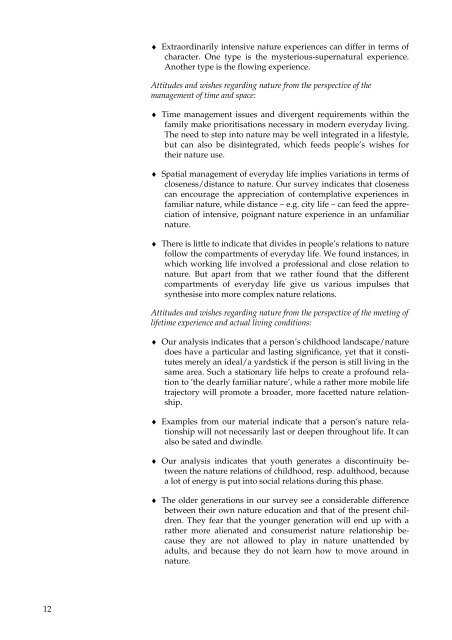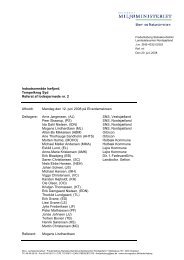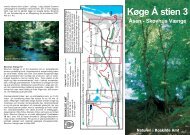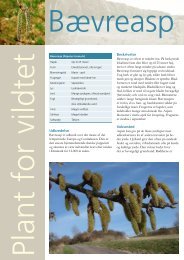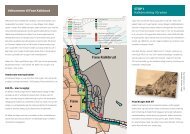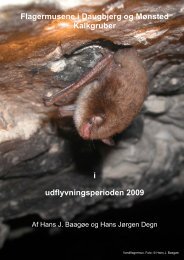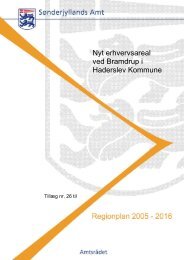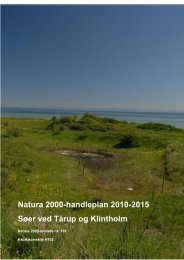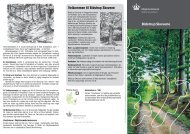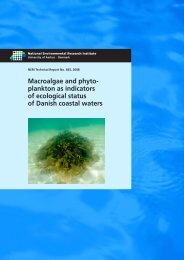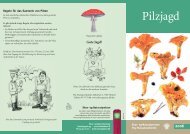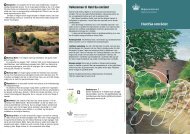Naturen i et hverdagslivsperspektiv - Naturstyrelsen
Naturen i et hverdagslivsperspektiv - Naturstyrelsen
Naturen i et hverdagslivsperspektiv - Naturstyrelsen
You also want an ePaper? Increase the reach of your titles
YUMPU automatically turns print PDFs into web optimized ePapers that Google loves.
12<br />
♦ Extraordinarily intensive nature experiences can differ in terms of<br />
character. One type is the mysterious-supernatural experience.<br />
Another type is the flowing experience.<br />
Attitudes and wishes regarding nature from the perspective of the<br />
management of time and space:<br />
♦ Time management issues and divergent requirements within the<br />
family make prioritisations necessary in modern everyday living.<br />
The need to step into nature may be well integrated in a lifestyle,<br />
but can also be disintegrated, which feeds people’s wishes for<br />
their nature use.<br />
♦ Spatial management of everyday life implies variations in terms of<br />
closeness/distance to nature. Our survey indicates that closeness<br />
can encourage the appreciation of contemplative experiences in<br />
familiar nature, while distance – e.g. city life – can feed the appreciation<br />
of intensive, poignant nature experience in an unfamiliar<br />
nature.<br />
♦ There is little to indicate that divides in people’s relations to nature<br />
follow the compartments of everyday life. We found instances, in<br />
which working life involved a professional and close relation to<br />
nature. But apart from that we rather found that the different<br />
compartments of everyday life give us various impulses that<br />
synthesise into more complex nature relations.<br />
Attitudes and wishes regarding nature from the perspective of the me<strong>et</strong>ing of<br />
lif<strong>et</strong>ime experience and actual living conditions:<br />
♦ Our analysis indicates that a person’s childhood landscape/nature<br />
does have a particular and lasting significance, y<strong>et</strong> that it constitutes<br />
merely an ideal/a yardstick if the person is still living in the<br />
same area. Such a stationary life helps to create a profound relation<br />
to ’the dearly familiar nature’, while a rather more mobile life<br />
trajectory will promote a broader, more fac<strong>et</strong>ted nature relationship.<br />
♦ Examples from our material indicate that a person’s nature relationship<br />
will not necessarily last or deepen throughout life. It can<br />
also be sated and dwindle.<br />
♦ Our analysis indicates that youth generates a discontinuity b<strong>et</strong>ween<br />
the nature relations of childhood, resp. adulthood, because<br />
a lot of energy is put into social relations during this phase.<br />
♦ The older generations in our survey see a considerable difference<br />
b<strong>et</strong>ween their own nature education and that of the present children.<br />
They fear that the younger generation will end up with a<br />
rather more alienated and consumerist nature relationship because<br />
they are not allowed to play in nature unattended by<br />
adults, and because they do not learn how to move around in<br />
nature.


